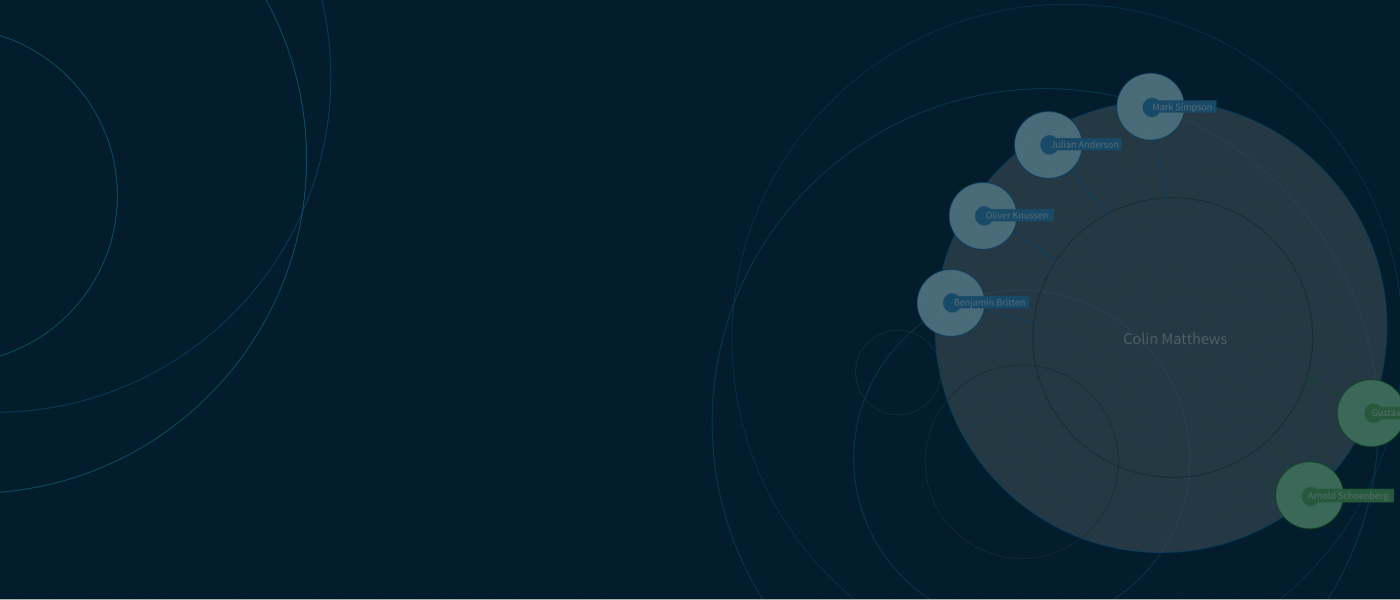Hannah Kendall: shouting forever into the receiver
30th September 2025
Articles NMC RecordingsComposer Hannah Kendall presents a behind the scenes look into her Debut Disc entitled shouting forever into the receiver. Hannah writes:
My recently released album with NMC, shouting forever into the receiver, features works written whilst living in New York City. It was there that I discovered ways to deeply realize themes that had long interested me—namely, the enduring, repetitive legacy of the plantation system, which Cuban writer Antonio Benítez-Rojo calls the “Plantation Machine,” and the unpredictable, transformative results of creolization, inspired by another Caribbean writer, Édouard Glissant from Martinique.
I moved to New York in 2018 to complete a doctorate in composition at Columbia University, where a particularly important class, Songs and Sounds of Protest of the Caribbean and Latin America, deepened my engagement with these themes. I was drawn to the course partly because my first opera, The Knife of Dawn (2016), is based on the story of Guyanese political activist and poet Martin Carter. The opera is set in his prison cell during a hunger strike in 1953, where he was incarcerated without charge while fighting for Guyanese independence from Britain. With my family roots in what was then British Guiana, this class inspired me to think about not only encapsulating stories born of the plantations—or the “Machine”—but also the very sounds themselves. For example, what might creolized sound actually sound like?

Jean-Michel Basquiat’s iconic crown symbol—prominently featured in his Tuxedo artwork—was at the forefront of my mind while writing a series of 10 pieces inspired by it, three of which appear on the album (Tuxedo: Diving Bell 2., Tuxedo: Crown; Sun King, and Tuxedo: Hot Summer No Water). The crown reminded me of Afro hair and its associated accessories, which led me to experiment with preparing instruments using these hair objects. For instance, I wrapped dreadlock cuffs—small, malleable metallic accessories ordinarily worn around locks or braids of hair—around the strings of orchestral instruments, symbolically recreating a creolized situation: combining the Euro (such as the violin) with the Afro (hair accessories), as was the case on the Caribbean plantations. The resulting sounds are unpredictable, changeable, and unexpected, in the same way we can’t know for sure how places and spaces will be transformed when they are creolized.
Music boxes feature in all but one of the pieces, so I think I should speak about those too! I’ll focus on the wind-up boxes, which play pre-programmed tunes independently when wound. These often include famous classical melodies like Beethoven’s Ode to Joy and Für Elise, composed during the establishment of the plantations. Usually, several music boxes play together—for example, eight in shouting forever into the receiver. Their tunes repeat tirelessly, intertwine and fade away before being cranked again for the next iteration. The effect is a cloud of melodies that flow and interrupt simultaneously, symbolizing the confluence of machines within the Plantation Machine. As Benítez-Rojo writes, “it was a machine made up of a naval machine, a military machine, a bureaucratic machine, a commercial machine, an extractive machine, a political machine, a legal machine, a religious machine—that is, an entire huge assemblage of machines, which there is no point in continuing to name.”
I am indebted to Columbia Composers, a rolling board of composers at the University who fundraise and support their colleagues in experimenting with new ideas, allowing us to write freely, and then record the pieces expertly. Both when flesh is pressed against the dark and Even sweetness can scratch the throat are a result of that process.
All the album’s works are, really, as I was able to then incorporate my newly honed approaches with enthusiasm in larger pieces, such as the title track with Ensemble Modern. I’d like to thank all the musicians who perform with such care and detail. I’m also deeply grateful to the whole NMC team for supporting me and my music in this way, and to everyone who helped fund the album. I hope listeners will be intrigued by the sound worlds I’m creating—and just as importantly, that the experience offers insight into why this approach to sound-making means so much to me.
Hannah Kendall, July 2025
